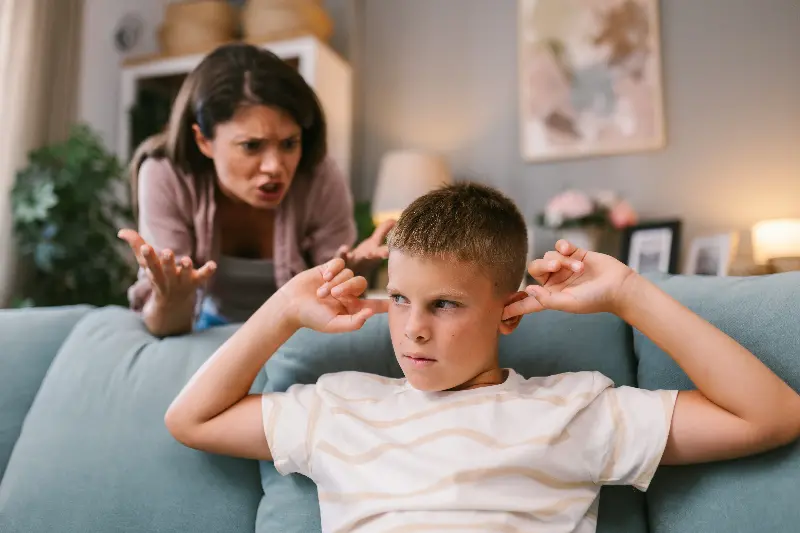Anger in children is a universal emotion, but as every parent knows, managing outbursts and big feelings can be challenging. The reality is, teaching kids to understand and handle their anger isn’t just about avoiding meltdowns at the dinner table or in the supermarket aisle. It’s about nurturing their emotional intelligence, which will help them build healthier relationships and social skills for life. In today’s busy world, smart parenting tactics can make all the difference in guiding children through their angry moments. Here are insights and interesting facts to help moms and dads handle their child’s anger with confidence and care.

Understanding the Roots of Child Anger
Before reacting to a child’s angry outburst, it helps to know where that emotion is coming from. Experts say anger is often a “secondary emotion”—meaning it’s what shows on the surface, but isn’t always what’s at the heart of the matter. Underneath, children might be masking feelings of frustration, fear, disappointment, or embarrassment.
Children’s brains are wired differently from adults. The prefrontal cortex, responsible for impulse control and reasoning, isn’t fully developed until the mid-20s. This means children naturally have a harder time self-regulating. Research actually shows that strong emotional outbursts are a normal part of brain development, especially between ages 2 and 7, when language and emotional skills are still growing.
The Power of Staying Calm
One of the smartest parenting tactics is to remember that calm is contagious. When parents keep their cool, even in the midst of chaos, children are more likely to mirror that calmness. Neuroscientists call this “co-regulation”—when an adult’s steady presence helps a child’s nervous system settle down.
It’s tempting to match a child’s volume or frustrations with your own, but experts advise taking a pause. Try a deep breath and speak in a neutral tone. If needed, take a moment before responding. This not only prevents escalation, but it models emotional control. Interestingly, studies have shown that when parents consistently react calmly, children display fewer angry outbursts over time.

Validation Over Dismissal
Kids need to know their feelings are real and understood. Even when a child’s anger seems unreasonable, validation plays a crucial role in emotional development. For example, instead of saying “There’s nothing to be angry about,” try “I can see you’re really upset.” This simple shift can help a child feel seen and heard.
Validation doesn’t mean agreeing with bad behavior—it means acknowledging the emotion. Dr. Dan Siegel, a clinical professor of psychiatry, recommends the “Name It to Tame It” technique. By helping children put words to their feelings (“You’re mad because your tower fell down”), parents help kids move from the reactive part of the brain to the rational part where solutions can be found.
Teaching Coping Skills
Anger is not something to suppress, but something to channel. Parents can empower kids by teaching them age-appropriate coping skills. For younger children, physical activities like squeezing a stress ball, jumping on the spot, or taking “dragon breaths” (long, deep belly breaths) can help dissipate anger quickly. Older children benefit from learning to recognize their “anger triggers” and using strategies such as drawing, journaling, or taking a timeout to cool off.
Role-playing can also be effective. Practicing phrases like “I feel angry when…” and proposing solutions in non-stressful moments helps prepare children for real-life frustrations. Remember, kids need lots of repetition—social and emotional learning is like learning to ride a bike.

Setting Boundaries and Consistency
Boundaries provide the structure children crave. It’s okay to be empathetic to a child’s feelings but firm on limits. Consistently communicating clear rules (“It’s okay to be angry, but it’s not okay to hit or throw”) reinforces the message that all feelings are acceptable, but some behaviors are not.
Interestingly, children raised with consistent boundaries tend to feel safer and display fewer behavioral problems. Consistency doesn’t mean rigidity. Circumstances might change, but the underlying rule—that anger is natural, while aggression has consequences—should remain steady.
Using Anger as a Learning Opportunity
When the storm has passed, don’t let the moment go to waste. The time after an angry episode is a great opportunity to teach emotional literacy. Talk through what happened, how everyone felt, and brainstorm together how to handle things next time. This isn’t about lectures or shame—it’s about building self-awareness and resilience.
Many families find success with “anger toolboxes.” These are collections of favorite strategies that children can use independently, such as noise-cancelling headphones, art supplies, or favorite music. Engaging children in assembling their toolbox gives them ownership and encourages self-regulation.
When to Seek Extra Help
It’s normal for children to have big feelings, but if anger turns into frequent aggression, or starts to interfere with schoolwork, friendships, or family life, it might be time to seek professional guidance. Child psychologists, counselors, or pediatricians can help identify underlying issues and provide tailored strategies.
In some cases, persistent anger can point to underlying anxiety, trauma, or developmental challenges. Seeking support is a sign of proactive parenting—not a symbol of failure. Early intervention can make a world of difference in a child’s wellbeing.
Empowering children to express and understand their anger sets the stage for emotional health throughout their lives. With patience, empathy, and a few smart parenting tactics, every mom and dad can turn angry outbursts into meaningful moments of growth.
